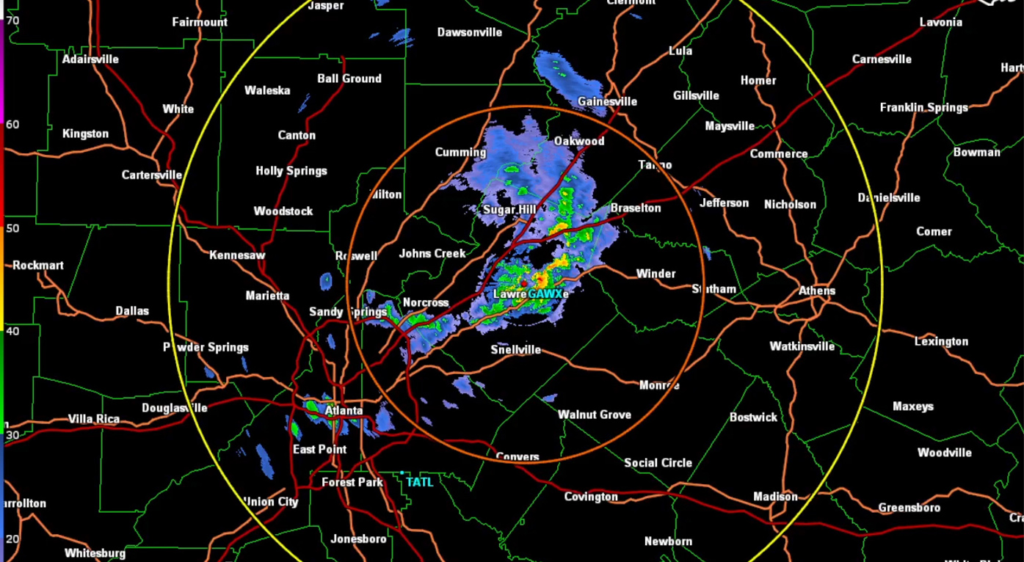You might not know it, but the Athens area in Georgia is located in a radar “hole” where the radar beam from the NOAA radar at Peachtree City is so high off the ground that it misses a lot of low-lying precipitation as well as storm structure that could be important for monitoring severe weather in the area. In response to this, UGA and GA Tech collaborated on a joint project that combined their forces to obtain a new radar that will cover the area better. The radar has been tested and the data are now available for others to look at. The information statement is given below:
The joint GTRI/GT/UGA X-band weather radar (GAWX) has been deployed and operating from Georgia Gwinnett College (GGC) in Lawrenceville since May 2024 (see attached news story). This data has been made available to GT, GTRI, UGA, GGC and National Weather Service (NWS) personnel since that time. Access to the data has been limited due to firewall and IT constraints at GTRI. In the last few weeks, in coordination with GTRI IT, the data feed has been also pushed from GTRI to another server at Iowa State University. This server has been used to provide data to a number of outside apps which present radar data from both the NWS NEXRAD radars and several other research radars. Using this server allows the data from GAWX to be accessed by many more concerned parties, including emergency managers and the general public. It also allows GT/GTRI, UGA, GGC and NWS users access when away from their VPN-enabled devices.
Currently, Windows users can view the GAWX data by using the Iowa State feed in the GR2Analyst program.
Users on mobile devices can view GAWX on both iOS and Android devices using the WeatherWise app.
